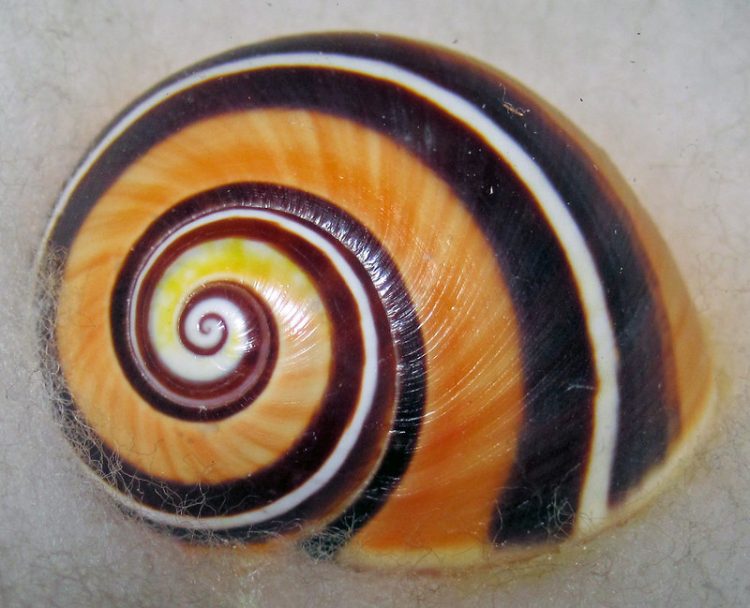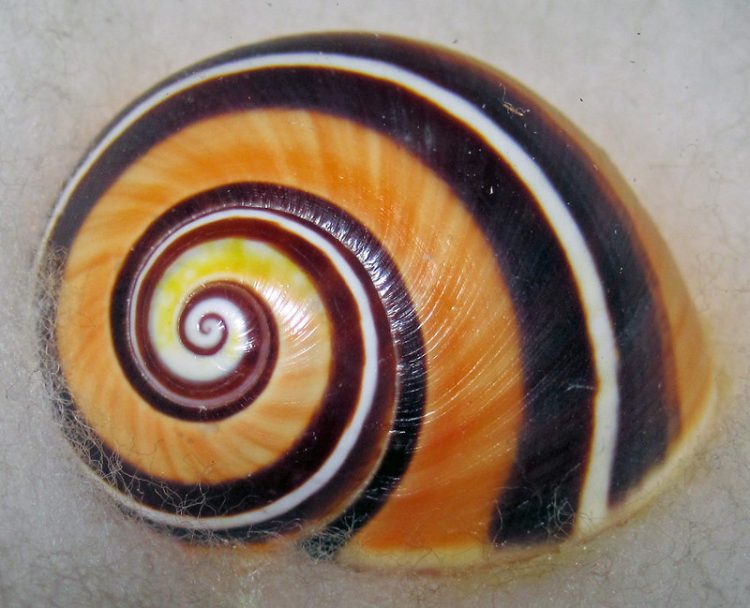Out of the roughly 1,400 species of land snails that call Cuba home, the six species of the genus Polymita, fondly known as painted snails, are without a doubt the most eye-catching.
When it comes to snail per se, there’s probably no beating the spectacular red-and-black contrast of the Malaysian fire snail, but as far as shells go, Cuba’s painted snails are in a class of their own. Just a look at the stunning swirling colors on their shells, and it’s easy to understand why they are considered by many to be the world’s most beautiful snails. However, this flattering title comes with a downside. Because their dazzling shells are so sought after by collectors, all six species of the genus Polymita are now critically endangered.

Photo: James St. John/Flickr
The shells of Cuban painted snails come in a variety of colors, from pearl white to pastel yellow and brick red, and each species has its own swirling design and markings. Interestingly, differences in color occur not just between different species of painted snails, but also within individuals of a single species. The reason why that happens is unknown, but scientists have their theories.
Some believe that the variation in coloring is an evolutionary trait designed to confuse predators, making it hard for them to home on in on specimens of a certain species. That sounds plausible, but whether or not this is the reason for the snails’ different colorations, or if they provide some other advantage remains unknown.
Cuban painted snails inhabit a very thin belt of vegetation along Cuba’s eastern coastline, where they feed on lichen and moss full of minerals that give their shells that stunning look. Because of their relatively small habitat, the gastropods are particularly vulnerable to land clearing by coffee growers, to predation by native and introduced predators as well as to climate change.
But perhaps the most worrying cause of Polymita snails’ “critically endangered” tag is poaching. There was once a time when locals collected painted snail shells for souvenirs without threatening the existence of the gastropods, but nowadays the global demand by collectors and merchants has become so great that it’s a real problem.
Collecting Cuban painted snails either for sale in Cuba or trading abroad is strictly prohibited, but while authorities have reportedly been “very effective” at preventing tourists from taking snail shells as souvenirs, their fight against organized illegal trade for the black market has been less successful.
“There are indeed organized trafficking networks in Cuba,” Reynaldo Estrada, a researcher with the Antonio Núñez Jiménez Foundation for Humankind and Nature, told National Geographic. “The true serious illegal trade for the black market is linked to a well-organized team of people.”
To help protect the beautiful Cuban painted snails, scientists are trying to educate both Cubans and foreigners about the gastropods’ vulnerability and increasing rarity. They are also working with farmers to get them to care for snails on their land.













